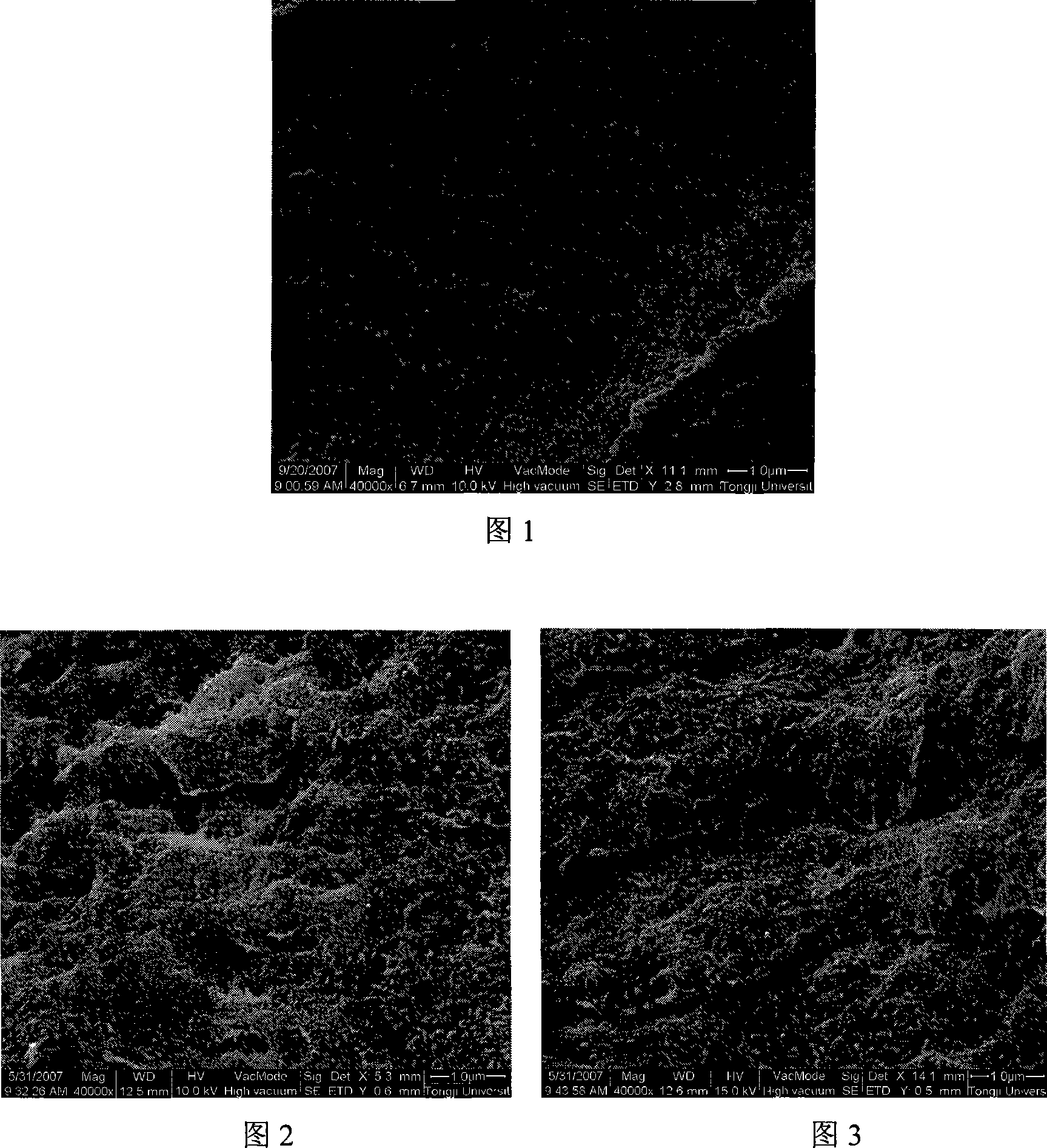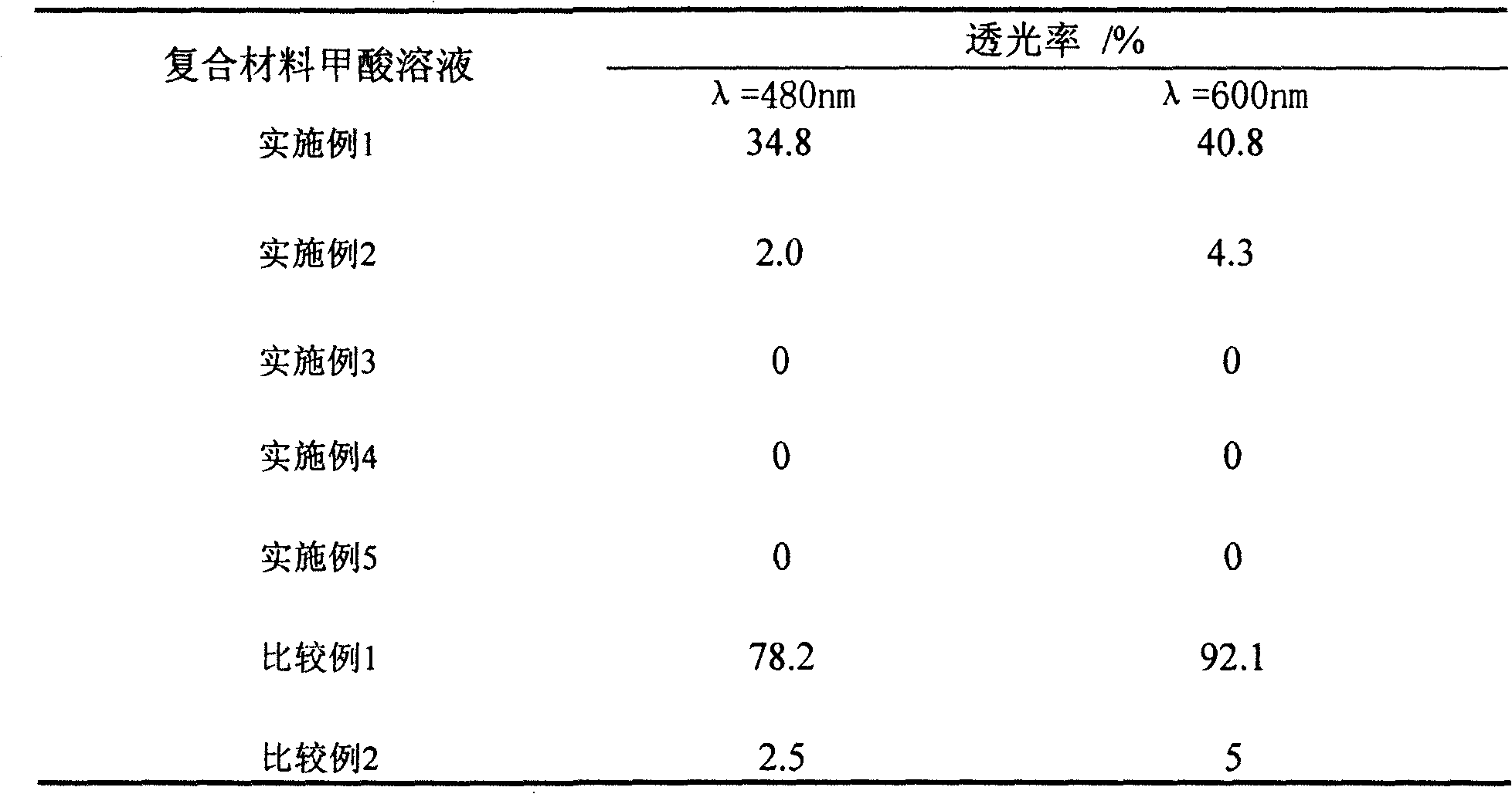Method for producing high decentrality amido carbon nano-tube/nylon 66 composite material
A carbon-aminated, high-dispersibility technology, applied in the field of materials, can solve problems such as poor impact strength, high water absorption, and low notch impact strength, and achieve the effects of improving dispersion performance, reducing clusters, and improving dispersibility
- Summary
- Abstract
- Description
- Claims
- Application Information
AI Technical Summary
Problems solved by technology
Method used
Image
Examples
Embodiment 1
[0024] Step 1: Preparation of carboxylated carbon nanotubes
[0025] Mix 1 g of carbon nanotubes with a diameter of 1-50 nm and a length of 0.1-50 μm, 120 ml of concentrated sulfuric acid and 40 ml of concentrated nitric acid, and vibrate ultrasonically at 40° C. for 8 hours. After the reaction is completed, use a large amount of deionized water to remove mixed acid and other by-products, filter with a microporous membrane (0.45 μm in diameter) until the filtrate is neutral, and dry to obtain acidified carbon nanotubes. Mix 1 g of acidified carbon nanotubes with 40 ml of concentrated sulfuric acid and 10 ml of hydrogen peroxide, and vibrate ultrasonically at 70° C. for 0.5 h. After the reaction is completed, use a large amount of deionized water to remove mixed acid and other by-products, filter with a microporous membrane (0.45 μm in diameter) until the filtrate is neutral, and dry to obtain carboxylated carbon nanotubes.
[0026] The second step: preparation of aminated car...
Embodiment 2
[0031] Step 1: Preparation of carboxylated carbon nanotubes
[0032] 1 g of carbon nanotubes with a diameter of 1-50 nm and a length of 0.1-50 μm, 120 ml of concentrated sulfuric acid and 40 ml of concentrated nitric acid were mixed evenly, and ultrasonically oscillated at 50° C. for 4 hours. After the reaction is completed, use a large amount of deionized water to remove mixed acid and other by-products, filter with a microporous membrane (0.45 μm in diameter) until the filtrate is neutral, and dry to obtain acidified carbon nanotubes. Mix 1 g of acidified carbon nanotubes with 40 ml of concentrated sulfuric acid and 10 ml of hydrogen peroxide, and vibrate ultrasonically at 60° C. for 0.5 h. After the reaction is completed, use a large amount of deionized water to remove mixed acid and other by-products, filter with a microporous membrane (0.45 μm in diameter) until the filtrate is neutral, and dry to obtain carboxylated carbon nanotubes.
[0033] The second step: preparatio...
Embodiment 3
[0038] Step 1: Preparation of carboxylated carbon nanotubes
[0039] 1 g of carbon nanotubes with a diameter of 1-50 nm and a length of 0.1-50 μm, 120 ml of concentrated sulfuric acid and 40 ml of concentrated nitric acid were mixed evenly, and ultrasonically oscillated at 50° C. for 4 hours. After the reaction is completed, use a large amount of deionized water to remove mixed acid and other by-products, filter with a microporous membrane (0.45 μm in diameter) until the filtrate is neutral, and dry to obtain acidified carbon nanotubes. Mix 1 g of acidified carbon nanotubes with 40 ml of concentrated sulfuric acid and 10 ml of hydrogen peroxide, and vibrate ultrasonically at 70° C. for 0.5 h. After the reaction is completed, use a large amount of deionized water to remove mixed acid and other by-products, filter with a microporous membrane (0.45 μm in diameter) until the filtrate is neutral, and dry to obtain carboxylated carbon nanotubes.
[0040] The second step: preparatio...
PUM
| Property | Measurement | Unit |
|---|---|---|
| diameter | aaaaa | aaaaa |
| length | aaaaa | aaaaa |
| diameter | aaaaa | aaaaa |
Abstract
Description
Claims
Application Information
 Login to View More
Login to View More - R&D
- Intellectual Property
- Life Sciences
- Materials
- Tech Scout
- Unparalleled Data Quality
- Higher Quality Content
- 60% Fewer Hallucinations
Browse by: Latest US Patents, China's latest patents, Technical Efficacy Thesaurus, Application Domain, Technology Topic, Popular Technical Reports.
© 2025 PatSnap. All rights reserved.Legal|Privacy policy|Modern Slavery Act Transparency Statement|Sitemap|About US| Contact US: help@patsnap.com



